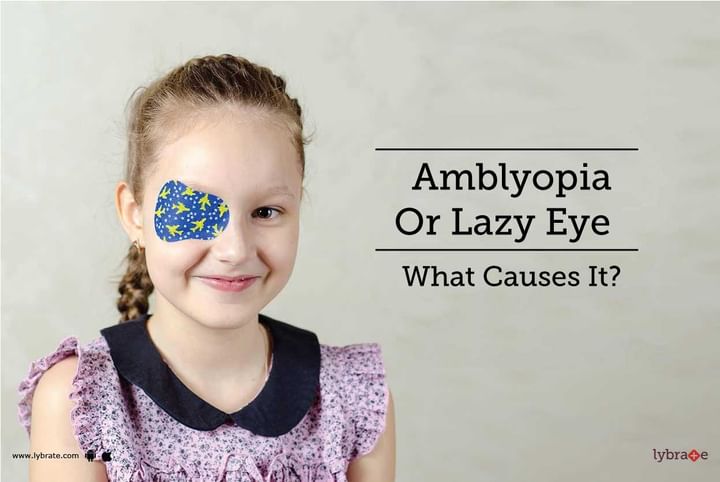Amblyopia Or Lazy Eye - What Causes It?
Amblyopia is commonly known as 'LAZY EYE'. It is a vision development disorder, which affects eyes and the brain during infancy and childhood. It signifies that the eye does not achieve a normal visual acuity even with refractive correction in form of glasses or contact lens. During normal visual development, the eye and brain learn to 'see' and develop binocularity, that is the ability to perceive depth (Stereoacuity). This occurs in the first 8 to 10 years of life. Each eye transmits a clear and identical image from retina to the brain, which fuses the two images into a single image with 3 dimensions ( adding depth). When the image is formed on the retina of two eyes is too dissimilar, the brain cannot fuse the two images and suppresses the more blurred image. As a result, the worse eye does not learn to 'see' and becomes 'lazy'. This condition is seen in 1-4% of the population.
The common causes of dissimilar images or Amblyopia are :
1. Misalignment of the eyes or squint: It is the primary reason for Amblyopia is a misalignment of the eyes. In case both your eyes are not aimed in the same direction, the image captured by each eye is different, resulting in diplopia. The brain will see from the dominant eye and suppress the image from the other eye. Over a prolonged period of time, the eye dissociates from the visual cortex of the brain.
2. Refractive Amblyopia:
a. Unequal refractive error in both eye. When the eye power of both eyes differs by more than 1.5D of spherical equivalent, which results in dissimilar images between the two eyes. As a result, visual development is restricted in the worse eye.
b. High refractive error or astigmatism in both eyes, since there is a blurred image in both eyes, the normal vision development does not occur in either eye resulting in bilateral lazy eyes.
3. Cloudiness in the visual system or visual deprivation Amblyopia: Any kind of obstruction or cloudiness in the normal visual axis of the eye tissues can lead to Amblyopia. Disorder of any kind, which blocks a clear image from being focused blocks the formation of a clear image on your retina. Commonly due to congenital or developmental cataracts or corneal opacities or prolonged closure of one eye in early childhood( drooping of one eyelid, eyelid swelling, patching of one eye).
Treatment for Amblyopia
For treatment of Amblyopia, a child must be compelled to utilize his affected, weaker eye. This can be done by correction of causative factor such as treating refractive error with glasses, surgical correction of misalignment of eyes followed by patching and vision therapy, cataract surgery.
Patching or occlusion of the good eye
This is done to force the brain to pay attention to visual input from the worse eye. This allows nerve connections between affected eye and brain to develop due to, which the eye 'learns to see'. Eye drops such as atropine are also used for blurring the vision of the good eye. Some form of vision therapy may also be required to train both eyes to see together and develop some degree of depth perception.
To be effective, treatment should be implemented as early as possible, within the period of normal visual development best within the first 8 years of life. Some visual gain has been seen in selected patients up to the age of 14 to 18 years. This also highlights the importance of a comprehensive eye examination as a routine in young children.



+1.svg)
